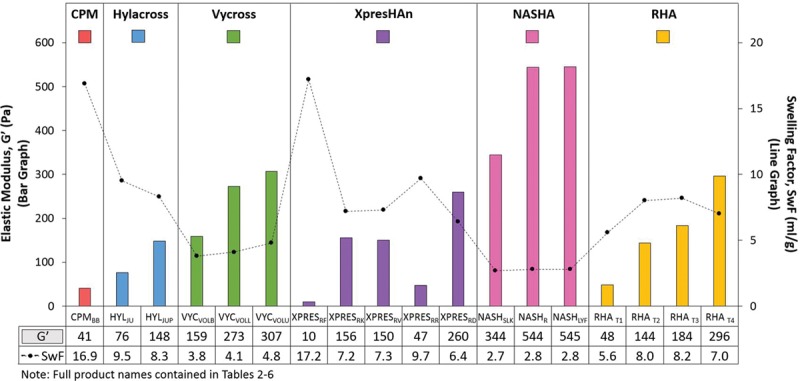Fig. 2.

The relationship between G′ and swelling factor (SwF) appeared most consistent only when evaluating products of the same hyaluronic acid concentration and manufacturing process, which showed that a higher swelling factor was associated with lower G′ and a lower swelling factor was associated with higher G′. Rheologic measurements were performed in a sequence that included a relaxation time of 30 minutes, a frequency sweep from 10 to 0.1 Hz at 0.1 percent strain, followed by an amplitude sweep from 0.1 to 10,000 percent (0.001 to 100) strain at 1 Hz. The gap was 1 mm using a PP25 measuring system at 25°C. Swelling factor was determined by dispersing 0.5 g of gel in saline by thorough mixing with 10 ml of 0.9% sodium chloride. The sample was shaken until dispersed and swollen to equilibrium. Swelling factor was calculated as the swollen volume (in milliliters) divided by tested weight of product (in grams).
